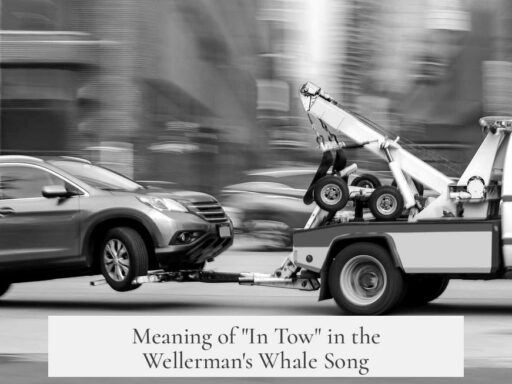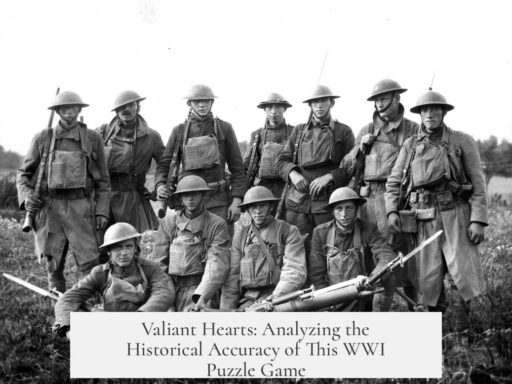In Brazil, many credit Alberto Santos-Dumont with inventing the airplane rather than the Wright brothers. However, historical and technical evidence shows the Wright brothers achieved powered, controlled, and sustained heavier-than-air flight before Santos-Dumont’s first flights. This distinction is key to understanding who truly invented the airplane.
The Wright brothers made their initial flights between 1903 and 1905. Their first powered flight occurred on December 17, 1903, at Kitty Hawk. Although brief, lasting only 12 seconds and about 120 feet, it was the first documented flight of a powered, heavier-than-air aircraft that took off and landed under its own power. The Wright Flyer used a launch rail to assist takeoff and had no wheels.
Some critics dismiss these early flights as mere “hops,” noting that the longest lasted less than a minute and used wind assistance. However, by 1904 the Wrights had mastered controlled circular flight, and by 1905 they achieved flights lasting over half an hour, covering distances exceeding 24 miles. This showed sustained, powered, and controlled flight – the hallmarks of a true airplane.
In contrast, Santos-Dumont’s flights began in 1906 with the 14-bis aircraft, which performed short, straight flights of less than a minute, often measured in meters rather than miles. By 1907, Dumont had developed a plane capable of sustained controlled flight, but his flights still did not match the distance or duration recorded by the Wright brothers in previous years.
A major point of contention lies in the Wright brothers’ use of a launch rail for takeoff, whereas Santos-Dumont’s aircraft used its own wheels. Dumont supporters argue that the Wrights’ reliance on a rail means their flights don’t count as true powered takeoff. Yet, the Wright brothers added wheels to their aircraft only in 1910, long after achieving sustained flight. The use of a launch rail was a practical solution to overcome challenges posed by the terrain and their aircraft’s design at the time.
The Wright brothers pursued patents and government contracts vigorously. They closely guarded their designs and flew mostly in remote locations to avoid competitors and patent infringement. This secrecy limited public demonstrations and documentation of their achievements during the early years.
By contrast, Santos-Dumont was based in Paris, where the Fédération Aéronautique Internationale (FAI) was founded in 1905. The FAI established rules for what constituted the first “official” flights. Dumont’s flights were witnessed and well-documented under FAI criteria, contributing to his recognition, especially in Europe and Brazil.
In 1908, after securing government contracts, the Wright brothers demonstrated their aircraft in Paris. The FAI reluctantly accepted their claim as the first true powered, controlled flight. Their design was technically superior, with the ability to fly farther, higher, and longer than any other plane existing at that time. This aligned with patent filings dating back to 1903, confirming their prior achievements.
| Aspect | Wright Brothers (1903-1905) | Santos-Dumont (1906-1907) |
|---|---|---|
| Engine Power | 12 horsepower | 50 horsepower |
| Longest Flight Duration | ~39 minutes | Under 1 minute |
| Flight Distance | Over 24 miles | Measured in meters |
| Takeoff Method | Launch rail (wheels added 1910) | Own wheels |
| Flight Control | Fully controlled, including turns and landing | Basic control, mostly straight-line flights |
Definitions matter in this debate. The Merriam-Webster dictionary defines an airplane as “a powered heavier-than-air aircraft with fixed wings from which it derives most of its lift.” By this definition, both the Wright Flyer and 14-bis qualify. The distinguishing factor is the level of control, sustainability, and ability to take off and land reliably under power.
On December 17, 1903, the Wright Flyer took off on its rail, flew under its own power without external assistance, and landed safely. Despite the launch rail, it produced a controlled, powered heavier-than-air flight. Their achievements in 1904 and 1905 extended this into longer, controlled flights in various conditions.
While Santos-Dumont made important innovations and was the first to achieve publicly demonstrable wheel-based takeoffs under FAI rules, his flights came after the Wright brothers’ documented successes. The Wright brothers’ flights were longer and more controlled, setting a higher benchmark for the airplane.
In summary, while Santos-Dumont’s role in aviation is significant, the Wright brothers achieved the first sustained, powered, and controlled heavier-than-air flight. Their technical innovations, flight duration, and control capabilities justify their recognition as the airplane’s inventors.
- The Wright brothers first achieved powered, controlled heavier-than-air flight in 1903-1905.
- Santos-Dumont’s flights began after, with shorter durations and less control.
- Launch rail use by the Wrights is a key debate point but does not negate their accomplishment.
- FAI recognition initially favored Santos-Dumont due to witnessed flights and rules.
- The Wrights later proved superior flight capabilities and are widely credited with inventing the airplane.
The Wright Brothers vs. Santos Dumont: Who Really Invented the Airplane?

In Brazil, pretty much no one acknowledges the Wright brothers invented the airplane. Most say it was Santos Dumont who did. Was that really the case? This question has stirred many debates, especially in Brazil, where Alberto Santos Dumont is treated as a national hero and the father of aviation. But let’s take a closer, fact-based look at history, separating myths from reality.
The story unfolds with two key players: the Wright brothers from Ohio, USA, and Santos Dumont, a Brazilian living in Paris. Each contributed uniquely, but who truly earned the title of first to fly an airplane?
Wright Brothers’ Early Flights (1903-1905): The First Heavy-Lifting Flyers
Orville and Wilbur Wright achieved the first powered, controlled, heavier-than-air flight on December 17, 1903. Their plane, the Wright Flyer, took off from a wooden rail to keep it straight at Kitty Hawk. It was not a long flight – roughly 12 seconds covering about 120 feet. Some critics call these “hops,” dismissing them as mere attempts rather than real flights.
But dismissing them overlooks what came next: by 1904 and 1905, the Wrights had improved their aircraft to fly in circles and stay airborne for over half an hour. That’s serious flying! On October 5, 1905, Wilbur flew for nearly 40 minutes, covering 24 miles, proving their machine could fly long distances under complete control.
The Launch Rail Controversy: Did the Wrights Cheat with a Rail?
One big argument from the Santos Dumont fans is that the Wright brothers’ use of a launch rail means their flights don’t count as “true” takeoffs. After all, Santos Dumont’s 14-bis aircraft took off from its own wheels, no rail in sight.
Interesting point, but which matters more: the method of takeoff or the fact the plane flew powered, controlled, and heavier-than-air? The Wrights did install wheels on their flyer only by 1910, but their launch rail didn’t provide power—it merely guided the plane during takeoff. The plane’s engine did the heavy lifting. Would a car using a ramp for momentum count less if it could run for miles after? Exactly.
Santos Dumont’s Flights: The Brazilian Pride
Like many pioneers, Dumont’s early flights were short and low, reminiscent of the Wright brothers’ first efforts. His 1906 flights lasted under one minute, and by 1907 he built a plane capable of sustained controlled flight. That’s impressive.
However, despite having a 50-horsepower engine—much stronger than the Wright Flyer’s 12-horsepower motor—Santos Dumont’s 14-bis never matched the duration or distance of the Wrights’ flights. His flights were still measured in seconds and meters, quite a contrast to the Wright brothers’ miles and minutes.
Secrecy & Commercial Focus: Why the Wright Brothers Stayed Under the Radar Initially

The Wright brothers had a slightly different mindset than Santos Dumont. They wanted patents, contracts, and to protect their invention. This led them to fly discreetly, away from prying eyes and photographers, making it harder for people to witness and verify their flights. When they finally displayed their planes publicly, skepticism faded.
On the other hand, Dumont flew in public spaces in Paris and delighted crowds, winning prizes and praise. That public visibility helped boost his status as the “first” flyer in the eyes of many, especially in Brazil.
Fédération Aéronautique Internationale (FAI) and Their Flight Rules
The FAI, established in Paris two years after the Wright brothers’ first flight, created criteria to define valid flights. These rules prioritized public demonstration and taking off under own power without external assistance, aiming to recognize flights like Dumont’s.
This inadvertently favored Dumont, whose flights were public and wheel-based. When the Wright brothers finally flew openly in Europe in 1908, the FAI acknowledged their superior engineering and pioneering achievements despite their earlier secrecy.
Flight Capabilities: How Do They Stack Up?
| Aspect | Wright Brothers | Santos Dumont |
|---|---|---|
| Year of First Flight | 1903 | 1906 |
| Flight Duration | Up to 39 minutes (1905) | Typically under 1 minute |
| Motor Power | 12 horsepower | 50 horsepower |
| Takeoff Method | Launch rail | Own wheels |
| Flight Control | Full maneuverability | Limited control |
Numbers don’t lie: the Wright brothers achieved longer flights with lesser horsepower and more limited technology. They mastered sustained, controlled flight long before Santos Dumont’s public displays.
What Does “Airplane” Really Mean?
Definitions matter. According to Merriam-Webster, an airplane is a “powered heavier-than-air aircraft with fixed wings from which it derives most of its lift.” By this description, both the Wright Flyer and 14-bis qualify.
However, only the Wright Flyer demonstrated consistent, controlled flight in any direction, sustained for long durations. That’s a big deal when considering the real accomplishment.
The Bottom Line: Credit Where Credit Is Due

Santos Dumont’s contributions to aviation are impressive and important, especially in popularizing flight and improving airplane design in Europe. He’s rightly a legend in Brazil and worldwide.
Yet, based on documented evidence, the Wright brothers were the first to achieve powered, controlled, and sustained flight. Their flights were longer, higher, and fully maneuverable – even if shrouded in secrecy at first.
In 1908, when they finally flew their plane publicly in Europe, the aviation world acknowledged the Wrights’ clear mastery. Their work was complex and groundbreaking, paving the way for modern aviation.
So Why Does Brazil Favor Santos Dumont?
Cultural pride, timing, and visibility play big roles. Santos Dumont’s public flights and charming personality won hearts. The Wrights’ secrecy allowed doubts to linger. Also, the FAI’s flight rules favored Santos Dumont’s style, influencing how history got recorded.
But isn’t history richer when it celebrates multiple heroes? The Wright brothers and Santos Dumont both deserve admiration, though their claims differ in scope.
“The Wright brothers invented the airplane, but Santos Dumont made the world believe it could fly.” – An aviation enthusiast’s take.
Want to Learn More?
- Explore the Wright brothers’ patent war and how it shaped aviation.
- Discover Santos Dumont’s other inventions and his influence on aircraft design.
- Compare other aviation pioneers whose stories often get overshadowed.
Remember, the next time you see a plane in the sky, think of both the Wright brothers quietly perfecting their Flyer on the dunes and Santos Dumont’s flamboyant flights over Paris. Both changed the world—just in different ways.




